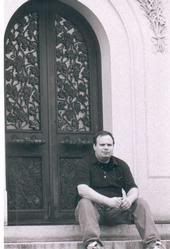Having already written about THE GHOST GALLEON and NIGHT OF THE SEAGULLS, the concluding chapters of the Blind Dead series, a review of TOMBS OF THE BLIND DEAD would be somewhat redundant since Amando de Ossorio established most of what made those films effective in his 1971 original. And while the films are similar to one another in technique and approach, TOMBS remains the most straightforward and pure, free of the embellishments de Ossorio would add in later installments.
One of the most evocative titles in the annals of Spanish horror cinema, TOMBS is little more than a few frightening set-pieces strung together with a minimum of character or exposition, but what it lacks in narrative weight it more than compensates in atmosphere--be it the almost palpable Gothic ambiance, or the deceptively idyllic pastoral backdrop that counterpoints the macabre setting.
Not a whole lot happens in the film--in which the skeletal remains of the Knights Templar prey upon those who've disturbed them--but it's the way it happens that makes TOMBS such a remarkable film. De Ossorio does a tremendous job of sustaining a careful, deliberate pace (though today's attention-deficient audiences might find themselves squirming) that only falters in setting up its final act. I'm finding it hard to discuss much of the story--since there really isn't one to speak of--but the smidgen of plot that's there progresses nicely, existing with the sole purpose of being as creepy as possible. The initial appearance of the Knights Templar is a low-key stand-out (a sequence so effective de Ossorio cribbed it for two of the subsequent sequels), as is the suitably nightmarish climax in which the Knights lay siege to the passengers of a train, the withheld gore making a greater impact when it finally occurs.
While de Ossorio's use of mood is the film's best aspect, it's easy to overlook how skillfully he utilizes sound to create tension and suspense. From the ominous chanting that serves as the movie's soundtrack or the slowed-down rhythm of hoof-beats as the Templars ride on undead horseback, TOMBS's audio is as efficient as its atmosphere; it's best represented in the scene in which the Templars (who, as the title tells us are sightless, rely on sound to follow their quarry) track a victim by her heartbeat. Or the final moments of the picture, as de Ossorio uses sound and still-shots to convey the horror of the concluding train massacre.
Though the whole BLIND DEAD series is worth watching, TOMBS is the most accomplished, using all of its elements to greatest effect, and the one I'd recommend to curious beginners. One of my all-time favorite zombie films.
Sunday, July 13, 2008
Subscribe to:
Post Comments (Atom)

No comments:
Post a Comment